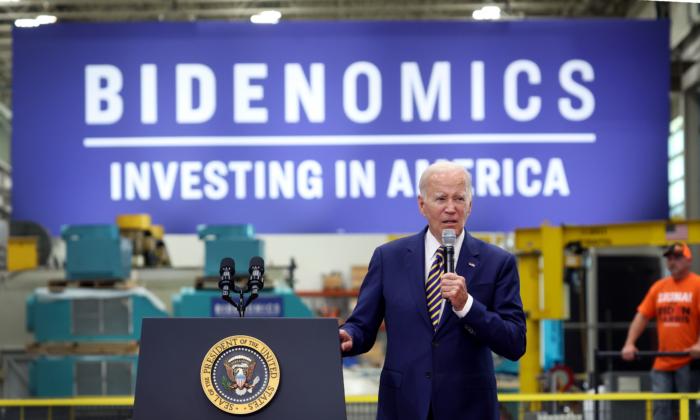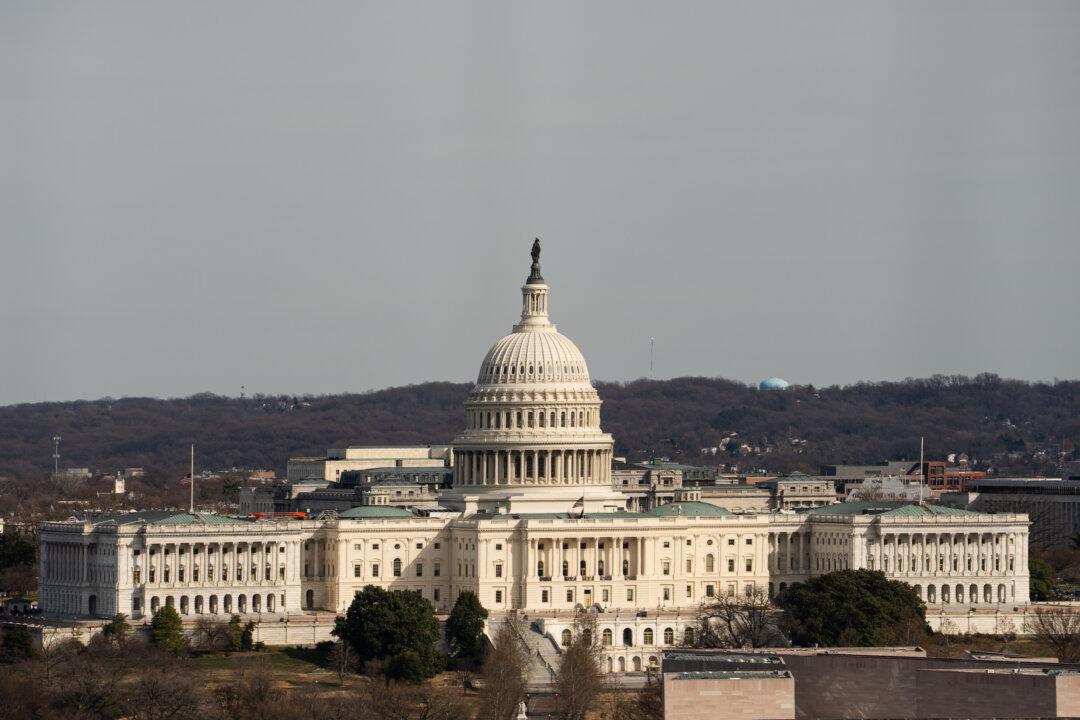As the challenges to the economy have evolved, politicians have not learned to focus on what is really hurting the American people.
Traditionally, unemployment and jobs are key indicators of economic health. In most elections, candidates either tout the jobs that have been created since they were elected or criticize increasing unemployment numbers.
The same model has been applied to analyzing this economy for the upcoming 2024 election. However, it may be the wrong focus.
The real pain in the 2023 American economy is not unemployment. It is affordability.
President Joe Biden’s policy of pouring debt on the American people, and increasing deficit spending, is creating a crisis of affordability. People have jobs—they just can’t afford to pay for anything.
The Winston Group has developed a new measurement to explain this: the Presidential Inflation Rate (PIR). Most analysts talk about inflation as an annualized figure, but this obscures how much prices have increased over time.
The annualized inflation rate understates the pain level experienced by the American people. If you look at the Winston Group’s PIR measurement, you see that food prices under Biden have gone up 19.4 percent. The price of electricity has gone up 25.6 percent. Gasoline prices have gone up 53.4 percent.
In fighting the Biden inflationary surge, the Federal Reserve has adopted the demand-side strategy of raising interest rates. The theory is simple: Create pain for the American people so we slow our spending. Ultimately, this will reduce inflation.
Under President Biden, this classic demand-side strategy is failing to work. The government is borrowing so much money—and spending it so extravagantly—that demand is sustaining even as the Fed tries to squeeze off the private sector.
Bidenomics is fueling Bidenflation and creating a crisis of affordability for most Americans.
You may have a job—but you have not likely had a pay raise. Meanwhile, the cost of everything you buy has gone up.
In just the last few weeks, the price of gasoline has jumped $.30 a gallon to an average of $3.87 for regular and $4.62 for premium. That is up from $2.42 for regular when President Trump left office. It is a 60 percent increase in the cost of something most Americans must buy. It is effectively, a gigantic tax increase for most working Americans. Yet energy is not the biggest cause of pain.
Traditionally, the sector hit hardest by demand-side interest rate increases is housing. Mortgage interest rates are now above 7 percent, which the New York Times reports is the highest rate in 21 years (1982). As mortgage rates rise, the cost of buying a house goes much higher. Home values decline, because people cannot afford the now much higher cost of the mortgage. When Trump left office in January 2021, mortgages averaged 2.65 percent—the lowest in 30 years. That has now almost tripled. The difference in cost measured over 20 or 30 years is staggering. It has effectively closed most people off from the housing market. They just can’t afford it.
Further, this deliberate Bidenomics hike in mortgage rates has lowered the value of houses for the millions of Americans for whom their home is their primary retirement savings. So, Bidenomics is impoverishing the young who can’t afford to buy a new house—and seniors who are watching their lifetime savings dwindle from higher costs and lower house values.
This crisis in affordability is beginning to show up as the biggest threat to how people measure the Biden economy. A new Emerson poll of New Hampshire voters has “housing affordability” skyrocketing in importance. It is the second biggest issue in the survey.
The economy led the list at 32 percent. However, one-in-five (21 percent) of those surveyed identified housing affordability as their top concern. For voters under 50, housing affordability was the top issue.
As the 2024 election approaches, many Americans may decide they just can’t afford Bidenomics.







